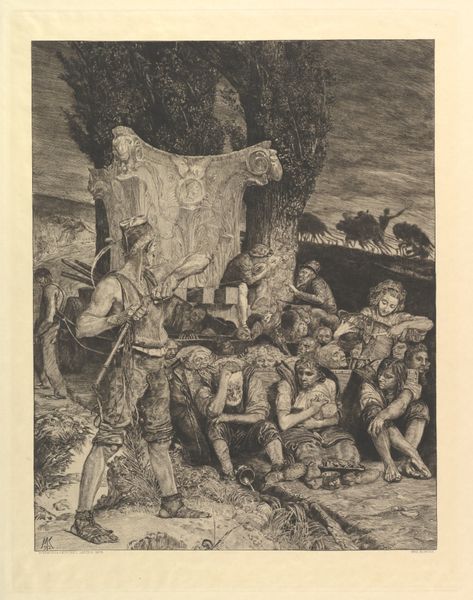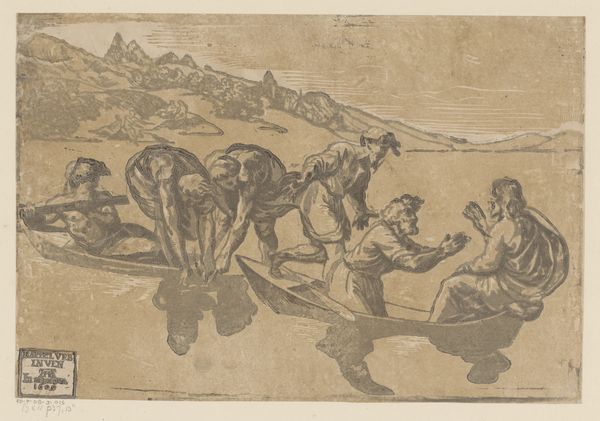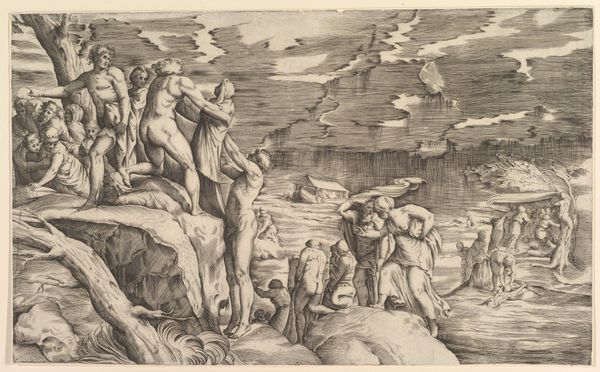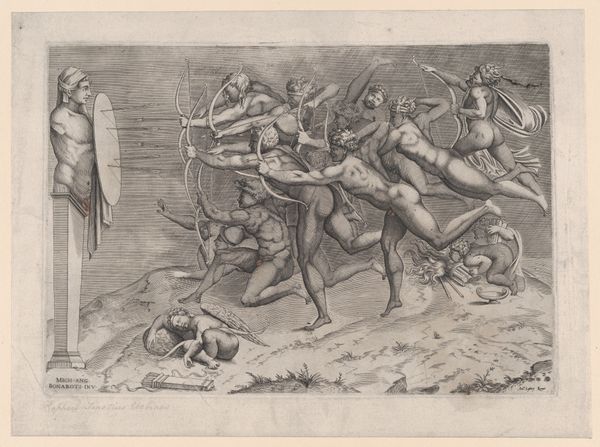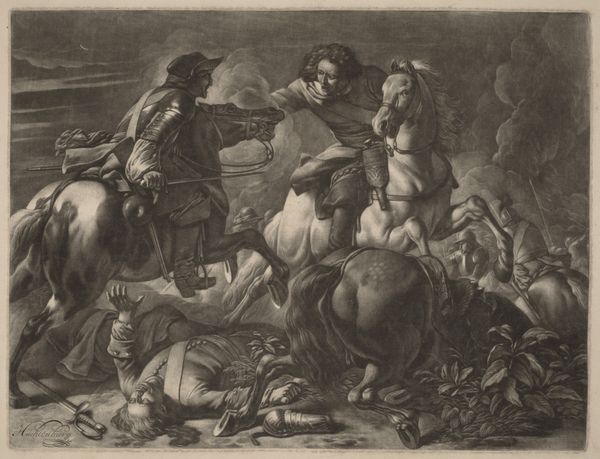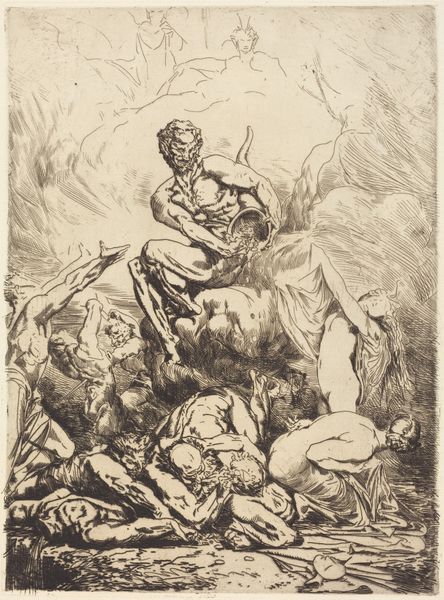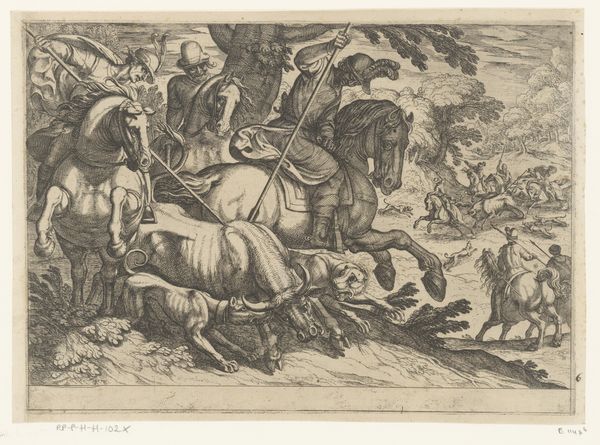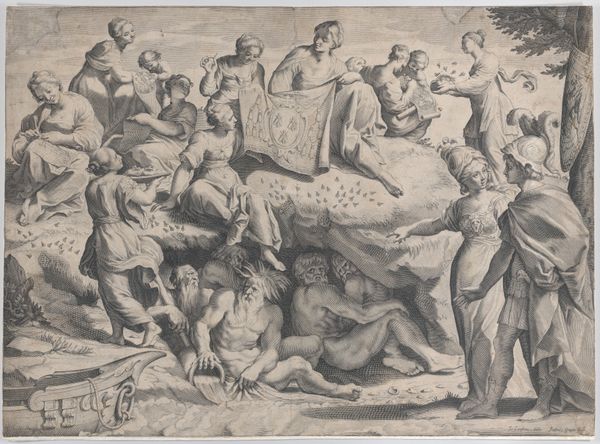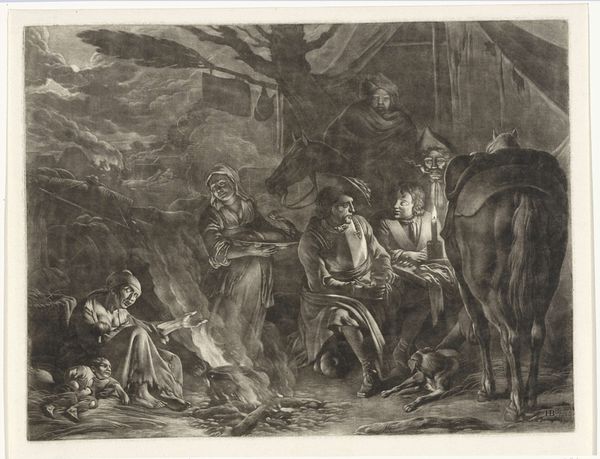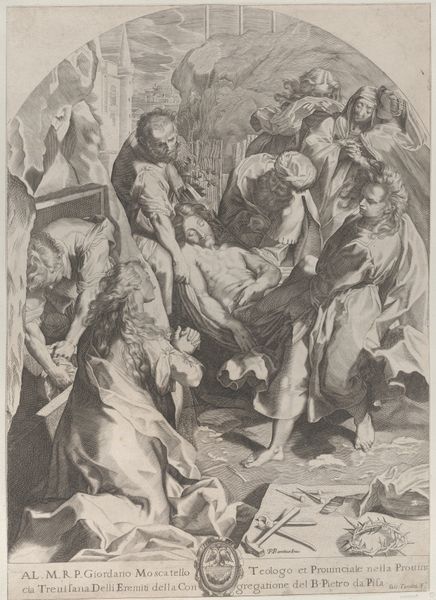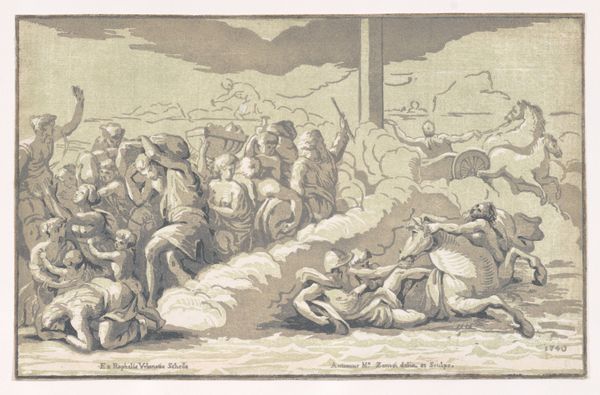
drawing, graphite
#
drawing
#
narrative-art
#
charcoal drawing
#
figuration
#
pencil drawing
#
romanticism
#
graphite
#
history-painting
Dimensions: height 602 mm, width 734 mm
Copyright: Rijks Museum: Open Domain
Curator: This is Charles Rochussen’s "The Raft of the Medusa," created sometime after 1829. What’s your immediate impression of this work? Editor: Stark. Raw. I'm immediately drawn to the sheer desperation etched on the figures’ faces and in their postures, they convey a primal struggle for survival amidst total disaster. It is just graphite and charcoal on paper but it powerfully depicts maritime disaster. Curator: Absolutely. Rochussen, in rendering this graphite drawing, confronts us with the historical shipwreck of the French frigate Méduse, unpacking the political critique inherent in the event and its artistic depictions. The composition clearly owes a debt to Géricault. Rochussen makes us witness to colonial mismanagement, but this smaller, more reproducible print has its own socio-political function in bringing the scene to new audiences. Editor: And look at the medium itself. Graphite and charcoal – easily transportable, cheap materials – perfect for disseminating a critical message widely and rapidly. This wasn't an oil painting for the elite; this was about getting the message of injustice to the masses using readily accessible materials. Also, Rochussen had his image reproduced, enabling wider circulation. How do we contextualize this choice in a moment where artistic and political agency intertwine so powerfully through printed media? Curator: Precisely. We’re not simply looking at a depiction of suffering, but at a deliberate distribution strategy intended to incite empathy, even outrage. By using such accessible methods, Rochussen bypasses traditional patronage systems. It speaks volumes about his intent, wouldn't you agree? The original was quite large and unwieldly. Editor: Agreed. I am particularly drawn to consider the economic accessibility Rochussen’s media makes possible. Rochussen harnesses the possibilities of drawing as a portable form for propagating both aesthetic and sociopolitical meaning, allowing art to actively influence perceptions and understandings of injustice. Curator: The act of depicting itself becomes a form of activism, challenging established narratives and hierarchies. This artwork definitely demands that we think about the intertwined roles of the artist, artwork, and broader social conscience. Editor: Absolutely. I appreciate that we are highlighting art’s potent potential for political engagement and cultural reflection beyond simply the high art market.
Comments
No comments
Be the first to comment and join the conversation on the ultimate creative platform.

